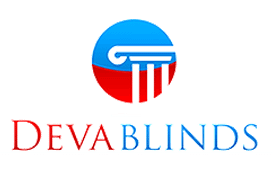Jay Steinfeld did not want to change the way people purchased blinds.
He had no passion for window coverings. He did not even have a business plan.
Wait, he had a plan–to succeed in business–just not a plan to sell more blinds, better and faster than before. That plan came later. When the CEO of Blinds.com, which will sell more than $100 million worth of blinds this year, started he was just a guy looking for work.
After losing his job, Steinfeld used his wife’s experience owing a blinds shop to enter into the window coverings business. Thinking he could succeed as a small business owner, Steinfeld opened his own shop. As soon it opened, Steinfeld defined himself as a success, even before the first customer placed an order.
Educated as an accountant, Steinfeld understands the numbers. The numbers, like the blinds are not his passion. Perfection is, even without achieving it.
“Experiment and experiment without fear of failure,” he says.
The process drives him. Make it better. Try something new. Improve and try again. Aiming for better rather that a strict margin of profit, Steinfeld saw his business grow by 30 percent in the last year. Neither his recent success nor the millions of dollars of blinds sold and hundreds of jobs created would have occurred without taking that first risk. After opening a retail blinds ship, Steinfeld soon took another.
Steinfeld launched Blinds.com in 1993 when O.J. Simpson was best known as a former running back. America Online was not a household name and the words “Internet” and “Domain Name” might as well have been in Klingon. For an investment of $1,500, Blinds.com started as an online newsletter of sorts, which was as just another of Steinfeld’s many experiments. The first incarnation of Blinds.com was a one-page piece of Internet real estate that served as an advertisement for Steinfeld’s blinds business.
Blinds.com folded out in steps, and the next was ecommerce. Steinfeld did not know that the Internet would become the INTERNET when he started. It was just an experiment. Building up an online presence was part luck, but it was mostly part of Steinfeld’s core value of always improving.
“We are really a direct marketing company not a blinds company,” Steinfeld says. “We keep testing how can we make this a little bit better. It’s like Thomas Edison experimenting with his filament.”
Being first on the scene provided Blinds.com with an advantage, but being the first online guaranteed nothing. Remember Pets.com? The pet supply retailer raised $300 million, purchased a commercial spot during the Super Bowl and enjoyed a sock puppet mascot so famous that it made an appearance on Good Morning America. Pets.com burned through that money fast and quickly went away.
Blinds.com arrived before an online audience existed. It was online before Google and Amazon. But it did not survive because of the luck and foresight of arriving first. It survived the dot.com bust because Steinfeld remained customer focused instead of chasing investor dollars. Steinfeld’s blinds business still had physical stores, and he slowly built his website’s offerings.
It wasn’t until 2001 that he went 100 percent online. It was another bold experiment, but it turned out to be the correct move. For Steinfeld, going exclusively to ecommerce meant the ongoing process of listening to the voice of the customer—people wanted to shop online more, but he also differentiated his business by striving to maintain the personal touch.
Steinfeld keeps a picture of a Good Humor Ice Cream Truck in his office, and it is not only because of his sweet tooth.
“So I ask you… are you taking time to ensure you and your business are like the ice cream man?” Steinfeld asked in a blog post. “How close are you to your customers? Do you know what’s selling, whether your customers are happy, and if not, then why not? Maybe it’s time to change into that white suit and hat.”
This approach has kept Steinfeld level-headed, hungry and perhaps even a tad bit insecure. Even as Blinds.com sold millions of dollars and then tens of millions of window coverings, Steinfeld fretted over the small things- the details that that his customers cared about. After his company sold more than $50 million in a year, he worried less about building a successful business.
“It became more along the lines of we are doing pretty well now, but how can we do better?” Steinfeld says. “I absolutely did not see this level of success it has been a metamorphoses to me. I had no vision.”
Yet, in his success he developed a vision for his own future. This includes helping his employees achieve their goals by maintaining one of the best places to work in the Houston. It will also explain why he will speak atUnleashWD.
About UnleashWD
UnleashWD is the only conference dedicated to bringing innovation to the wholesale distribution industry. UnleashWD features eighteen storytellers from outside the wholesale distribution industry. Modeled after TED’s short-session format, UnleashWD’s speakers share how to add business value through inspiring presentations on topics such as innovation, leadership, business model design, and corporate culture.
For the last twenty-five years, UnleashWD Founder Beveridge has worked with more than 3,000 firms as a leadership consultant, facilitating how wholesale distributors and manufacturers can increase market share through examining and improving their relationship with customers. For more information please visit: http://www.unleashwd.com.



 Hunter Douglas, a Netherland-based manufacturer of window coverings, is set to launch the first sun control system made from recycled bottles.
Hunter Douglas, a Netherland-based manufacturer of window coverings, is set to launch the first sun control system made from recycled bottles.